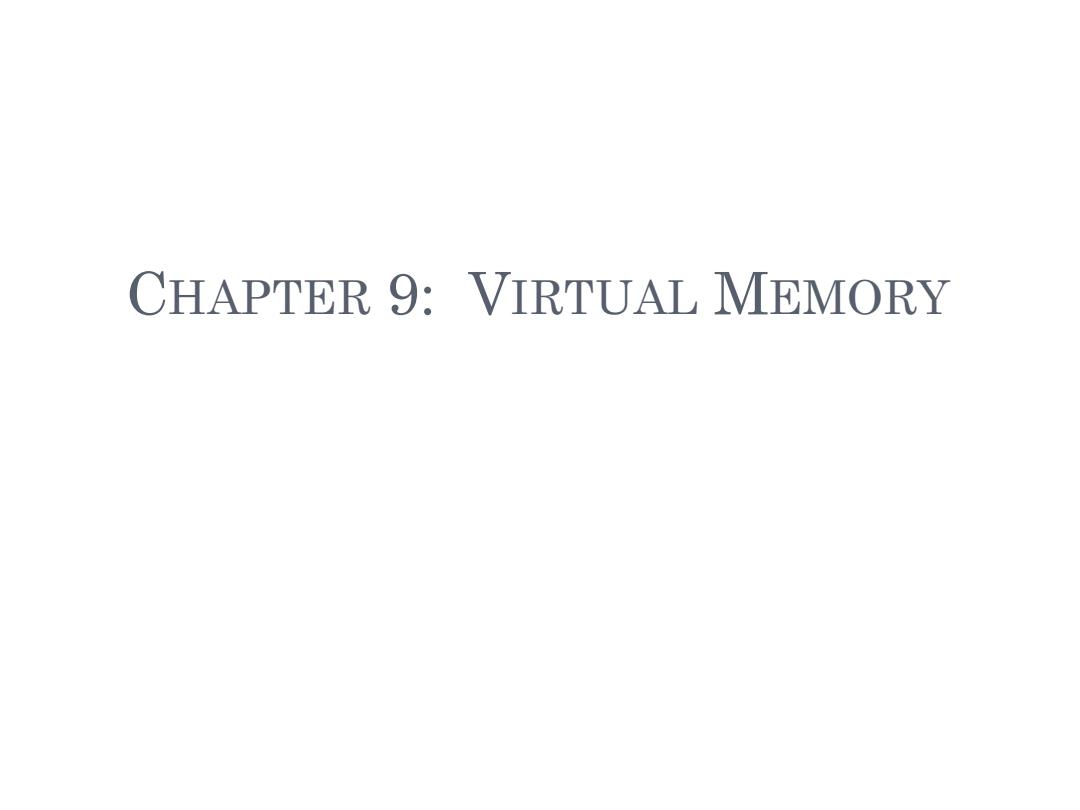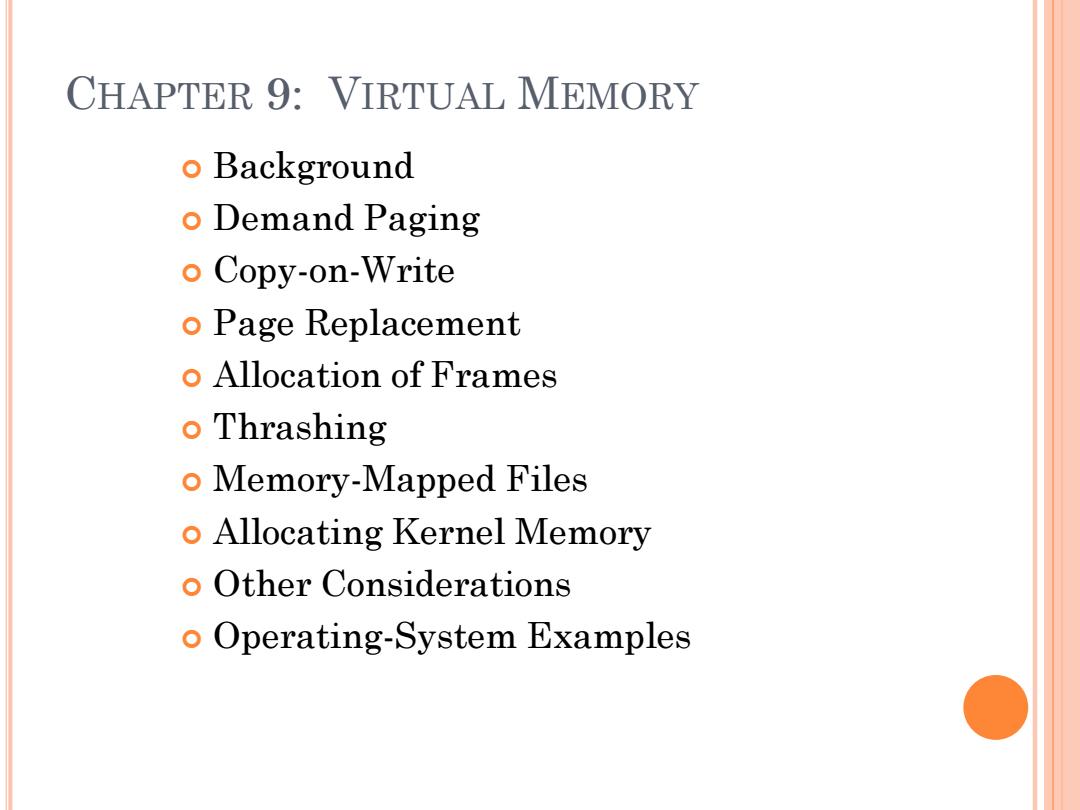
CHAPTER 9:VIRTUAL MEMORY
CHAPTER 9: VIRTUAL MEMORY

CHAPTER 9:VIRTUAL MEMORY o Background o Demand Paging o Copy-on-Write o Page Replacement o Allocation of Frames o Thrashing o Memory-Mapped Files o Allocating Kernel Memory o Other Considerations o Operating-System Examples
CHAPTER 9: VIRTUAL MEMORY Background Demand Paging Copy-on-Write Page Replacement Allocation of Frames Thrashing Memory-Mapped Files Allocating Kernel Memory Other Considerations Operating-System Examples

OBJECTIVES o To describe the benefits of a virtual memory system o To explain the concepts of demand paging, page-replacement algorithms,and allocation of page frames o To discuss the principle of the working-set model
OBJECTIVES To describe the benefits of a virtual memory system To explain the concepts of demand paging, page-replacement algorithms, and allocation of page frames To discuss the principle of the working-set model

BACKGROUND o Virtual memory-separation of user logical memory from physical memory. Only part of the program needs to be in memory for execution Logical address space can therefore be much larger than physical address space Allows address spaces to be shared by several processes Allows for more efficient process creation o Virtual memory can be implemented via: 。Demand paging ·Demand segmentation
BACKGROUND Virtual memory – separation of user logical memory from physical memory. Only part of the program needs to be in memory for execution Logical address space can therefore be much larger than physical address space Allows address spaces to be shared by several processes Allows for more efficient process creation Virtual memory can be implemented via: Demand paging Demand segmentation

VIRTUAL MEMORY THAT IS LARGER THAN PHYSICAL MEMORY page 0 page 1 page 2 memory map page v physical memory virtual memory
VIRTUAL MEMORY THAT IS LARGER THAN PHYSICAL MEMORY